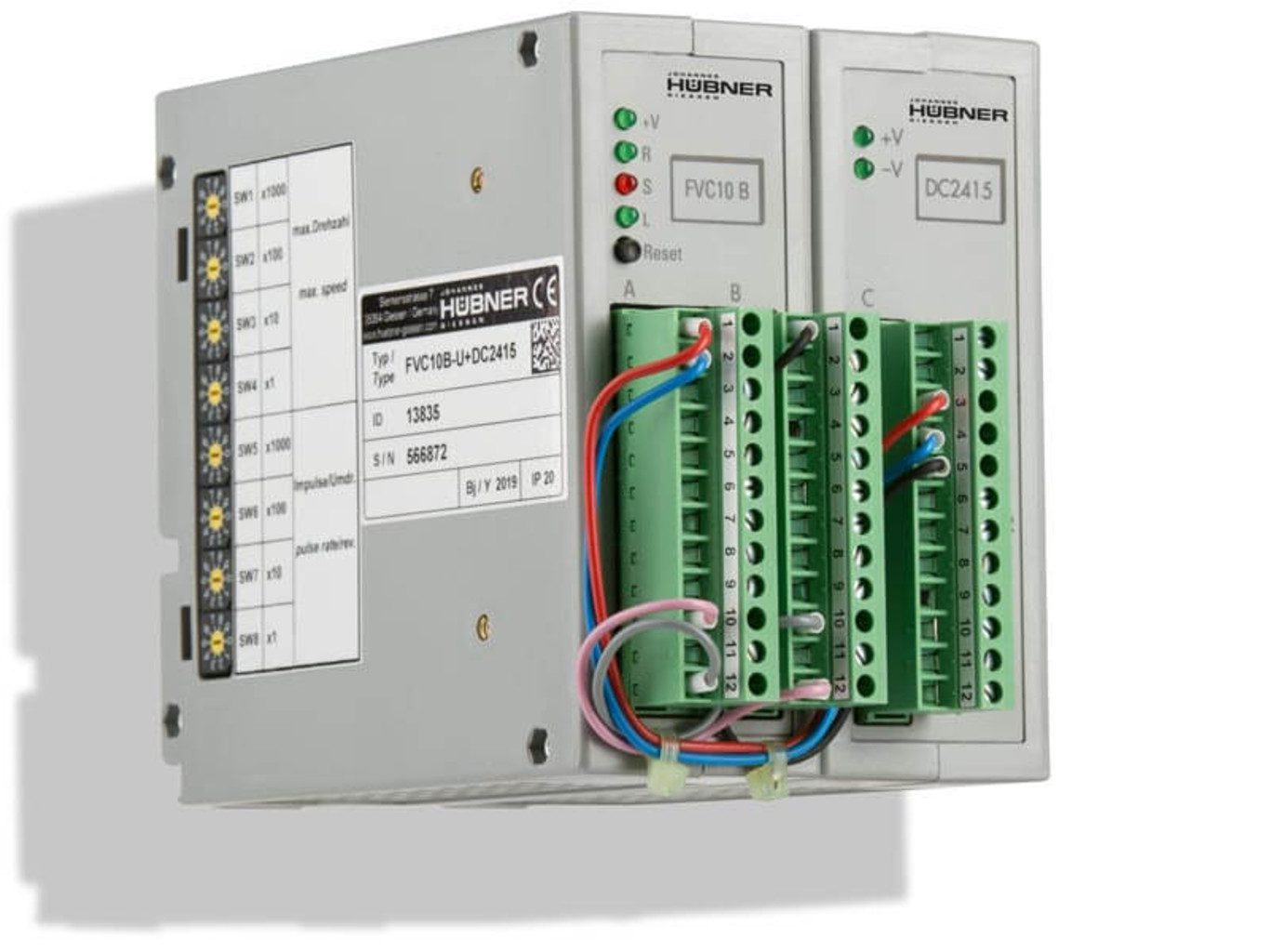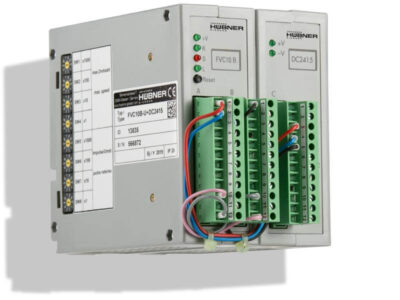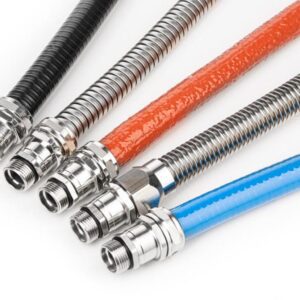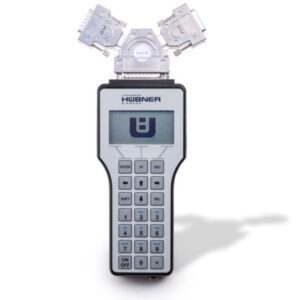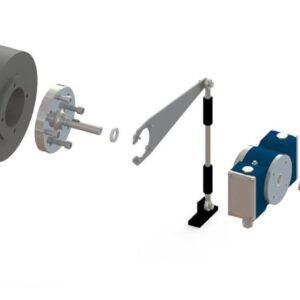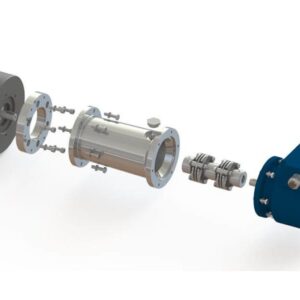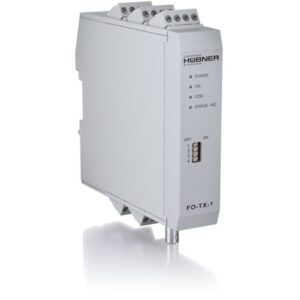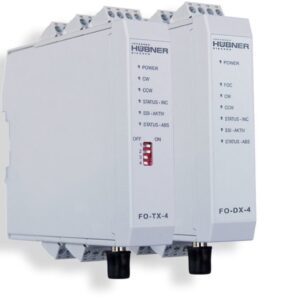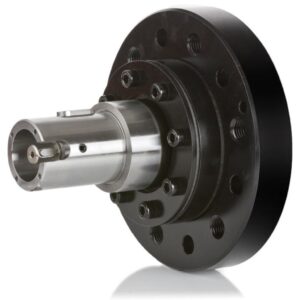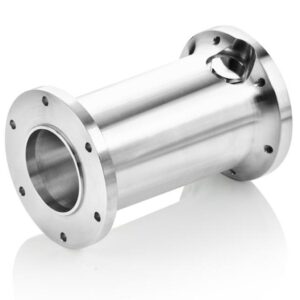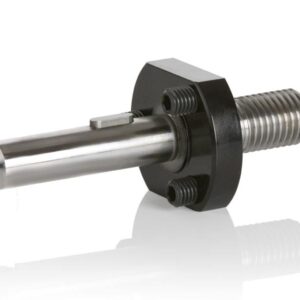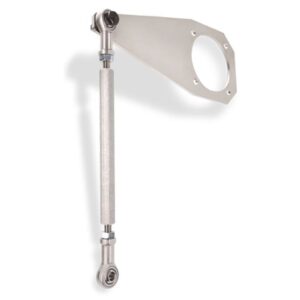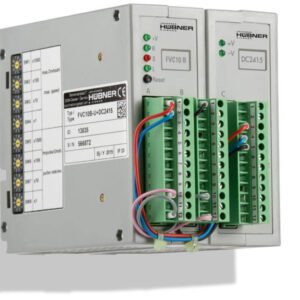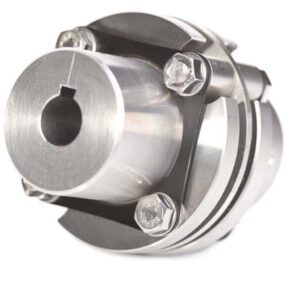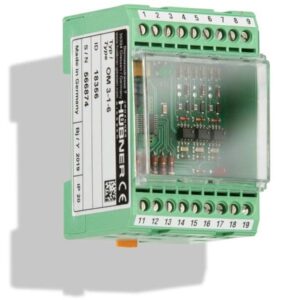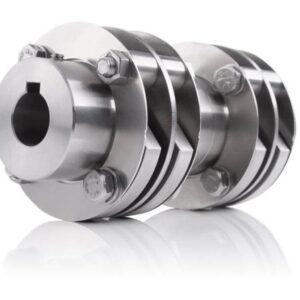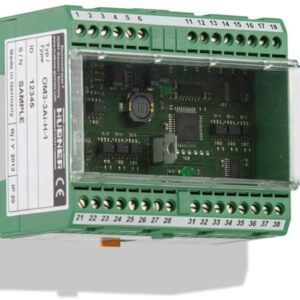Description
FVC 10
Frequency-voltage converter for signals: HTL / TTL → analog
- Convert digital encoder signals to analog signals
- Ideal for controllers with analog inputs
- Configurable by means of switches without configuration software
- Options: Overspeed notification/voltage monitoring
Frequency-voltage converter / signal converter
Frequency-voltage converters are utilized to convert output signals from incremental encoders in a speed-proportional and direction-of-rotation dependent DC voltage or rather direct current. The final speed and pulse rate are set via four coding switches respectively. The resulting value is converted and fed to the analog outputs.
Technical Data
| Product usage | Convert encoder signal outputs to analog (0…±10 V, 0…±20 mA, +4…+20 mA) |
| Supply voltage | ±15 VDC (optional 24 VDC) |
| Signal input | Incremental encoder (5-30 V) and reset input (TTL level, 0 V)
|
| Signal output | 0 to ±10 VDC (max. 20 mA) and 3 LEDs for clockwise, counterclockwise rotation and standstill |
| Frequency range | 0 – 200 kHz |
| Casing | Module housing for standard mounting rail |
| Dimensions | Max. 90 x 118 x 136 mm |
| Device temperature range | 0 °C to +50 °C |
| Degree of protection | IP20 |
| Electrical connection | 24 pole PHOENIX COMBICON male header |
| Device options |
|
| Mechanical options | |
| Special features and certificates |
Downloads
FVC-10 Frequency Voltage Converter Offered By Hubner in Australia
Introduction
In this article, we will explore the FVC-10 frequency-to-voltage converter offered by Hubner in Australia. The FVC-10 is a cutting-edge device that allows for the conversion of frequency signals into corresponding voltage outputs. This technology has various applications across different industries, offering precise measurements and control in numerous systems. In the following sections, we will delve into the key features, applications, and benefits of the FVC-10 converter, providing a comprehensive overview of this innovative product.
I. Key Features of the FVC-10 Frequency Voltage Converter
The FVC-10 frequency voltage converter boasts several notable features that make it a versatile and reliable choice for various applications. Some of its key features include:
- High Performance: The FVC-10 utilizes advanced circuit techniques and a high-performance architecture, ensuring accurate frequency-to-voltage conversion.
- Fast Response Time: With the implementation of current conveyors, up-down counters, and an ultra-high-speed D/A converter, the FVC-10 achieves a short overall response time. This allows for real-time monitoring and control in time-sensitive applications.
- Successive-Approximation Technique: The FVC-10 employs the successive-approximation technique, eliminating the need for matched components. This simplifies the design and reduces production costs while maintaining precise conversion accuracy.
- Wide Frequency Range: The FVC-10 supports a wide range of frequencies, enabling its use in various applications that require different frequency inputs.
II. Applications of the FVC-10 Frequency Voltage Converter
The FVC-10 finds extensive use in numerous industrial sectors thanks to its reliable performance and accurate frequency-to-voltage conversion capabilities. Some notable applications include:
- Industrial Automation: The FVC-10 is widely employed in industrial automation systems for monitoring and controlling processes that rely on frequency signals. It enables seamless integration of frequency-based data into control systems.
- Power Generation and Distribution: In the power sector, the FVC-10 facilitates the conversion of frequency signals generated by generators and power grids into voltage outputs. This helps in monitoring and maintaining stable power supply systems.
- Automotive Electronics: The FVC-10 plays a crucial role in automotive electronics, where it converts frequency signals from various sensors (e.g., speed sensors) into voltage outputs. This information is then utilized for vehicle control and diagnostics.
- Test and Measurement: The FVC-10 is utilized in test and measurement equipment, allowing accurate conversion of frequency signals into voltage outputs. This is essential for conducting precise measurements and analyzing frequency-based data.
III. Benefits of the FVC-10 Frequency Voltage Converter
The FVC-10 offers several advantages that make it a preferred choice for many industrial applications. Some notable benefits include:
- Accuracy and Precision: The FVC-10 ensures the accurate conversion of frequency signals into corresponding voltage outputs, providing precise measurements and control.
- Versatility: With its wide frequency range and high-performance architecture, the FVC-10 caters to diverse applications across multiple industries.
- Cost-Effectiveness: The successive-approximation technique employed by the FVC-10 eliminates the need for matched components, reducing production costs without compromising accuracy.
- Reliability: Hubner, a renowned manufacturer, offers the FVC-10 converter, known for its reliability and durability, ensuring consistent performance even in challenging environments.


